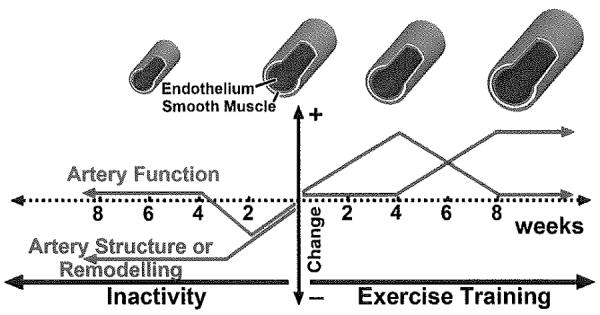Figure 2.

Changes in artery function and structure (remodeling) show differential time courses in response to increasing or decreasing human physical activity as hypothesized by Thijssen et al. (506). Exercise training (right side) produces early, rapid increases of arterial function (blue line), which is followed weeks later by arterial remodeling (red line and larger diameter vessel) that returns arterial function to pre-exercise training levels. Physical inactivity (left side) is associated with immediate, rapid decreases in arterial diameter after spinal cord injury (decreased size in top far left blood vessels and red line). Function immediately decreases and then returns to pre-injury value. [Reproduced with permission from Figure 2 in ref. (506)].
